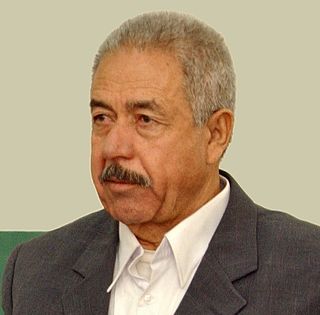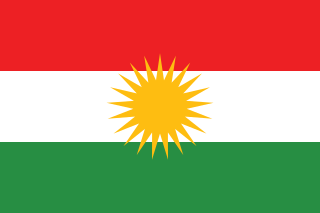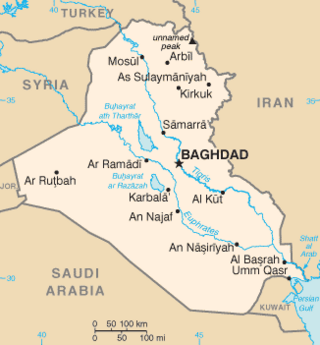
Under the Arab Socialist Ba'ath Party, Iraq's human rights record was considered one of the worst in the world. Secret police, state terrorism, torture, mass murder, genocide, ethnic cleansing, rape, deportations, extrajudicial killings, forced disappearances, assassinations, chemical warfare, and the destruction of the Mesopotamian marshes were some of the methods Saddam Hussein and the country's Ba'athist government used to maintain control. Saddam committed crimes of aggression during the Iran–Iraq War and the Gulf War, which violated the Charter of the United Nations. The total number of deaths and disappearances related to repression during this period is unknown, but is estimated to be at least 250,000 to 290,000 according to Human Rights Watch, with the great majority of those occurring as a result of the Anfal genocide in 1988 and the suppression of the uprisings in Iraq in 1991. Human Rights Watch and Amnesty International issued regular reports of widespread imprisonment and torture.

Colonel General Ali Hassan al-Majid al-Tikriti, was an Iraqi military officer and politician under Saddam Hussein who served as Defense minister, Interior minister, and chief of the General Security. He was also the governor of Kuwait during much of the Gulf War.
The Halabja massacre took place in Iraqi Kurdistan on 16 March 1988, when thousands of Kurds were killed by a large-scale Iraqi chemical attack. A targeted attack in Halabja, it was carried out during the Anfal campaign, which was led by Iraqi military officer Ali Hassan al-Majid. Two days before the attack, the city had been captured by Iran as part of Operation Zafar 7 of the Iran–Iraq War. Following the incident, the United Nations launched an investigation and concluded that mustard gas and other unidentified nerve agents had been used against Kurdish civilians. The United States Defense Intelligence Agency initially blamed Iran for the attack, though the majority of evidence later revealed that Iraq had used the chemical weapons to bolster an ongoing military offensive against Iran, pro-Iranian Kurdish fighters, and ordinary Halabja residents.

Halabja is a city in the Kurdistan Region of Iraq and the capital of Halabja Governorate, located about 240 km (150 mi) northeast of Baghdad and 14 km (9 mi) from the Iranian border.
The Iraqi High Tribunal (IHT), formerly the Iraqi Special Tribunal and sometimes referred to as the Supreme Iraqi Criminal Tribunal, is a body established under Iraqi national law to try Iraqi nationals or residents accused of genocide, crimes against humanity, war crimes or other serious crimes committed between 1968 and 2003. It organized the trial of Saddam Hussein and other members of his Ba'ath Party regime.
Frans Cornelis Adrianus van Anraat is a Dutch war criminal and a businessman. He sold raw materials for the production of chemical weapons to Iraq during the reign of Saddam Hussein. In December 2005, a court in The Hague convicted him of complicity in war crimes for his role in selling chemical weapons to Saddam's government. He was given a 15-year sentence. On appeal, Anraat's sentence was increased to 17 years, then reduced to 16.5 years. He was released from prison in 2015.

Rauf Rashid Abd al-Rahman is the replacement chief judge of the Al-Dujail trial of Saddam Hussein in 2006, when he sentenced Saddam and some of his top aides to death by hanging.

Kurdistan Region (KRI) is a semi-autonomous federal region of the Republic of Iraq. It comprises four Kurdish-majority governorates of Arab-majority Iraq: Erbil Governorate, Sulaymaniyah Governorate, Duhok Governorate, and Halabja Governorate. It is located in northern Iraq, which shares borders with Iran to the east, Turkey to the north, and Syria to the west.

The 1991 Iraqi uprisings were ethnic and religious uprisings against Saddam Hussein's Ba'athist regime in Iraq that were led by Shia Arabs and Kurds. The uprisings lasted from March to April 1991 after a ceasefire following the end of the Gulf War. The mostly uncoordinated insurgency was fueled by the perception that Iraqi President Saddam Hussein had become vulnerable to regime change. This perception of weakness was largely the result of the outcome of the Iran–Iraq War and the Gulf War, both of which occurred within a single decade and devastated the population and economy of Iraq.

Operation Zafar 7 was an Iranian offensive during the Iran–Iraq War. The Iranian military operation was successfully led by Lieutenant General Hossein Hassani Sa'di where Iran won the battle and also repelled the ensuing Iraqi Counterattack. However, Iran faced technical setbacks with massive economic and military sanctions in place against the country. As a result of those setbacks, Iran was unable to reach its objective of capturing Sulaymaniyah.

Wafiq Ajeel Homood al-Samarrai, better known as Wafiq al-Samarrai, was an Iraqi military officer and intelligence chief who served as Iraq's chief of general military intelligence during Saddam Hussein's era.

Nawshirwan Mustafa was an Iraqi Kurdish politician who served as the General Coordinator of the Movement for Change and the leader of the opposition in the Kurdistan Region from 1 April 2009 to his death on 19 May 2017.

The Battle ofSulaymaniyah was one of the greatest battles fought during the 1991 uprisings in Iraq. Sulaymaniyah, a mostly Kurdish city with a population of over 100,000, was the first to be liberated by the rebels and the last to fall back to the Iraqi army.

The 1983–1986 Kurdish rebellions in Iraq occurred during the Iran–Iraq War as PUK and KDP Kurdish militias of Iraqi Kurdistan rebelled against Saddam Hussein as part of the Iraqi–Kurdish conflict, in an attempt to form an independent state. With Iraqi government forces occupied by the Iran-Iraq War, Kurdish Peshmerga succeeded in taking control of some enclaves, with Iranian logistic and sometimes military support. The initial rebellion resulted in stalemate by 1985.

The Iraqi–Kurdish conflict consists of a series of wars, rebellions and disputes between the Kurds and the central authority of Iraq starting in the 20th century shortly after the defeat of the Ottoman Empire in World War I. Some put the marking point of the conflict beginning to the attempt by Mahmud Barzanji to establish an independent Kingdom of Kurdistan, while others relate to the conflict as only the post-1961 insurrection by the Barzanis.

Between 1968 and 2003, the ruling Arab Socialist Ba'ath Party of the Iraqi Republic perpetrated multiple campaigns of demographic engineering against the country's non-Arabs. While Arabs constitute the majority of Iraq's population as a whole, they are not the majority in all parts of northern Iraq. In an attempt to Arabize the north, the Iraqi government pursued a policy of ethnic cleansing, killing and forcefully displacing a large number of Iraqi minorities—predominantly Kurds, but also Turkmen, Yazidis, Assyrians, Shabaks and Armenians, among others—and subsequently allotting the cleared land to Arab settlers. In 1978 and 1979 alone, 600 Kurdish villages were burned down and around 200,000 Kurds were deported to other parts of Iraq.

The 1st Corps was a corps of the Iraqi Army, established before the Iran–Iraq War. It was located in Kurdistan Region.
Dr Osman Ahmed is a Kurdish-British artist from Iraq who has been exhibited in galleries across Europe and the Middle East, including the Tate Britain and the Imperial War Museum. He has been described as "one of Kurdistan’s best-known artists" by The Economist.

Amna Suraka is a museum in Sulaymaniyah, Kurdistan Region of Iraq.

Nugra Salman , also known as Nugrat al-Salman or Nigrat Salman is a former prison facility near the village Salman in the desert of the Muthanna Governorate in Iraq. It has been constructed in 1930 during the Hashemite Monarchy and later also by the Governments of Abd al-Karim Qasim and Saddam Hussein.























